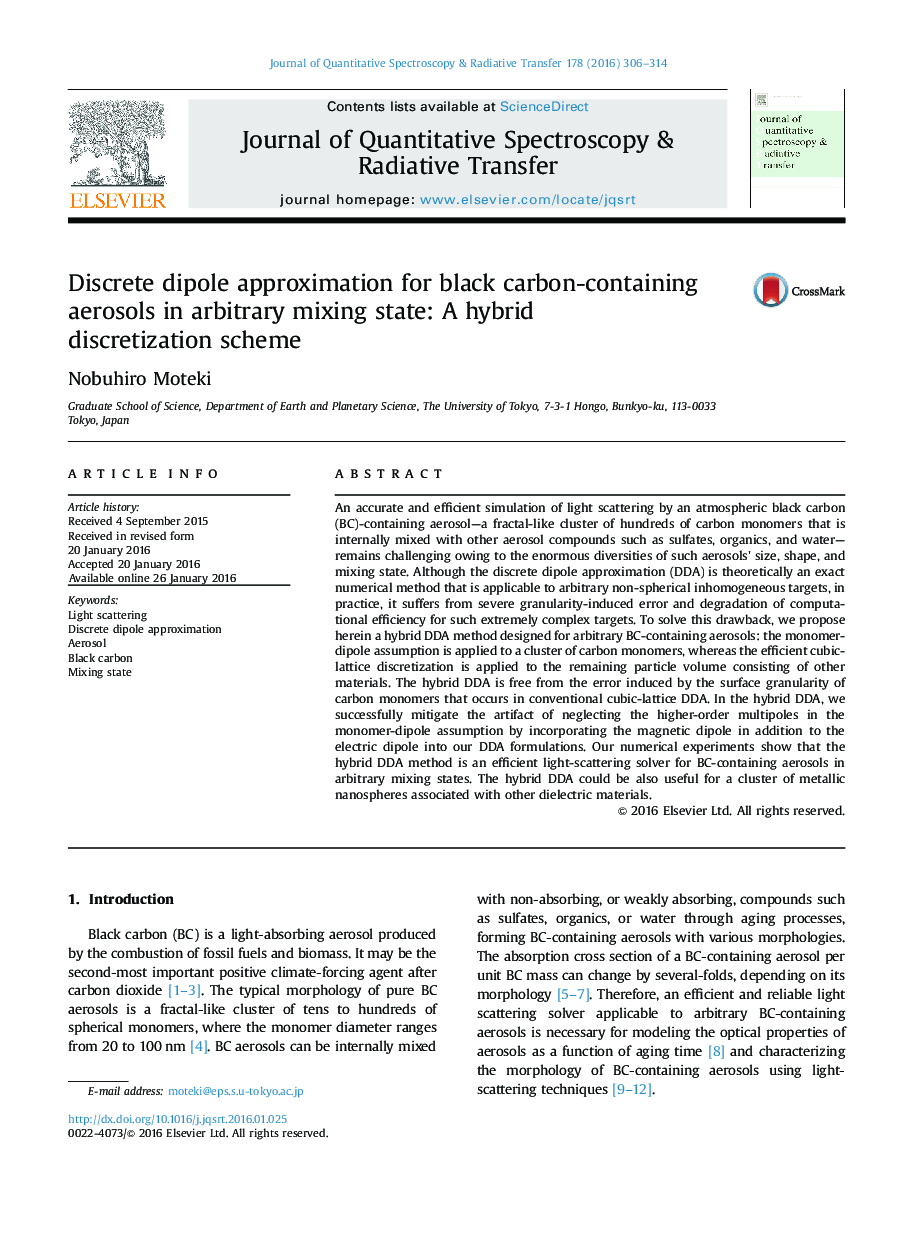| Article ID | Journal | Published Year | Pages | File Type |
|---|---|---|---|---|
| 5427600 | Journal of Quantitative Spectroscopy and Radiative Transfer | 2016 | 9 Pages |
â¢Light scattering code is developed for atmospheric black carbon aerosols.â¢A hybrid discretization scheme in discrete dipole approximation (DDA) is proposed.â¢The addition of the magnetic dipole improves the accuracy of the hybrid DDA.â¢Improved computational efficiencies are achieved in the hybrid DDA.
An accurate and efficient simulation of light scattering by an atmospheric black carbon (BC)-containing aerosol-a fractal-like cluster of hundreds of carbon monomers that is internally mixed with other aerosol compounds such as sulfates, organics, and water-remains challenging owing to the enormous diversities of such aerosols׳ size, shape, and mixing state. Although the discrete dipole approximation (DDA) is theoretically an exact numerical method that is applicable to arbitrary non-spherical inhomogeneous targets, in practice, it suffers from severe granularity-induced error and degradation of computational efficiency for such extremely complex targets. To solve this drawback, we propose herein a hybrid DDA method designed for arbitrary BC-containing aerosols: the monomer-dipole assumption is applied to a cluster of carbon monomers, whereas the efficient cubic-lattice discretization is applied to the remaining particle volume consisting of other materials. The hybrid DDA is free from the error induced by the surface granularity of carbon monomers that occurs in conventional cubic-lattice DDA. In the hybrid DDA, we successfully mitigate the artifact of neglecting the higher-order multipoles in the monomer-dipole assumption by incorporating the magnetic dipole in addition to the electric dipole into our DDA formulations. Our numerical experiments show that the hybrid DDA method is an efficient light-scattering solver for BC-containing aerosols in arbitrary mixing states. The hybrid DDA could be also useful for a cluster of metallic nanospheres associated with other dielectric materials.
